Egypt is a land steeped in mystery, history, and ancient wonders, with the Pyramids of Giza standing as one of the most awe-inspiring legacies of its ancient civilization. Located just outside Cairo, these massive structures—particularly the Great Pyramid of Giza—have fascinated travelers, archaeologists, and historians for centuries. But to truly appreciate the significance of the pyramids and understand their rich history, a guided tour is the key to unlocking the many secrets hidden within these monumental tombs. From their construction techniques to the spiritual beliefs behind them, a professional guide will provide valuable insights that go far beyond the surface. Whether you’re marveling at the grandeur of the Great Pyramid, uncovering the mysteries of the Great Sphinx, or exploring the inner chambers of the tombs, a guided tour offers a deeper connection to these ancient wonders. In this article, we’ll take you through the highlights of a guided tour of the Pyramids of Giza, ensuring you understand not only what you’re seeing but why these monuments continue to captivate the world.
- Egypt Tour Magic
- Egypt Tour Packages
- Excursions in Egypt
- Cairo Tours and Excursions
- Hurghada Tours and Excursions
- Soma Bay Tours and Excursions
- Makadi Bay Tours and Excursions
- Sahl Hasheesh Tours and Excursions
- El Gouna Tours and Excursions
- Marsa Alam Tours and Excursions
- Port Ghalib Tours and Excursions
- El Quseir Tours and Excursions
- Dendera and Abydos Day Tours
- Aswan Tours and Excursions
- Luxor Tours and Excursions
- Alexandria Tours and Excursions
- Sharm El Sheikh Tours and Excursions
- Top Rated Tours in 2025
- Optional Excursions in Egypt
- Private Transfer
- Blogs About egypt
- Ancient Egypt
- What You Need To know Before Your First Trip To Egypt
- Best Places to Visit in Egypt 2025
- Top Attractions in Red Sea Resorts 2025
- Top 10 Tourist Activities in Egypt
- Top 30 Activities You Can’t Miss in Egypt
- The Guide to Guided Tours in Egypt
- Egypt’s Ancient and Modern History
- The Nile River
- The Deserts of Egypt
- Historical Sites in Egypt
- Cairo
- Alexandria
- Luxor
- Aswan
- The Red Sea
- Dendera Temple
- El Fayoum Oasis
- Bahariya Oasis
- Siwa Oasis
- Al Alamein
- Marsa Matruh
- Ancient Egyptian gods
- famous Egyptian dishes
- UNESCO World Heritage sites
- About Us
- Why Egypt Tour Magic
- Egypt Tour Magic
- Egypt Tour Packages
- Excursions in Egypt
- Cairo Tours and Excursions
- Hurghada Tours and Excursions
- Soma Bay Tours and Excursions
- Makadi Bay Tours and Excursions
- Sahl Hasheesh Tours and Excursions
- El Gouna Tours and Excursions
- Marsa Alam Tours and Excursions
- Port Ghalib Tours and Excursions
- El Quseir Tours and Excursions
- Dendera and Abydos Day Tours
- Aswan Tours and Excursions
- Luxor Tours and Excursions
- Alexandria Tours and Excursions
- Sharm El Sheikh Tours and Excursions
- Top Rated Tours in 2025
- Optional Excursions in Egypt
- Private Transfer
- Blogs About egypt
- Ancient Egypt
- What You Need To know Before Your First Trip To Egypt
- Best Places to Visit in Egypt 2025
- Top Attractions in Red Sea Resorts 2025
- Top 10 Tourist Activities in Egypt
- Top 30 Activities You Can’t Miss in Egypt
- The Guide to Guided Tours in Egypt
- Egypt’s Ancient and Modern History
- The Nile River
- The Deserts of Egypt
- Historical Sites in Egypt
- Cairo
- Alexandria
- Luxor
- Aswan
- The Red Sea
- Dendera Temple
- El Fayoum Oasis
- Bahariya Oasis
- Siwa Oasis
- Al Alamein
- Marsa Matruh
- Ancient Egyptian gods
- famous Egyptian dishes
- UNESCO World Heritage sites
- About Us
- Why Egypt Tour Magic
Exploring the Majestic Pyramids of Giza
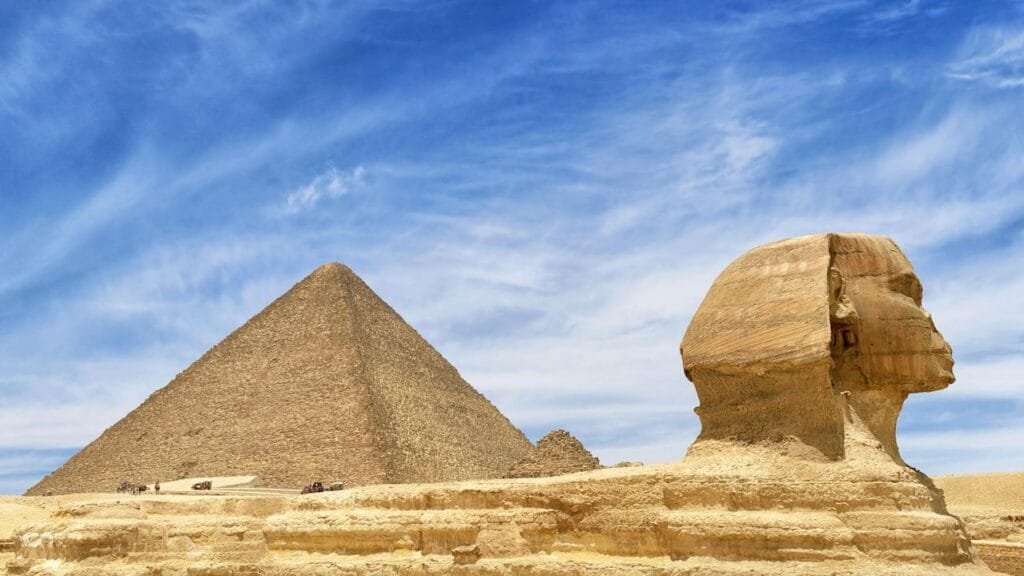
A Journey into Egypt's Ancient Wonders
Visiting the Pyramids of Giza is an extraordinary experience, offering a rare opportunity to step into the ancient world of the Pharaohs. Located just outside Cairo, these monumental structures have stood for over 4,500 years, and a guided tour allows you to fully appreciate their historical, cultural, and architectural significance. These pyramids, especially the Great Pyramid of Giza, have been subjects of fascination and mystery for centuries. From their construction techniques to their symbolic meanings, the pyramids hold numerous secrets that are best unlocked by an expert guide. Whether you’re admiring the grandeur of these ancient wonders or pondering how they were constructed, a knowledgeable guide will provide deep insights that make the experience even more immersive. A guided tour is invaluable, as it not only brings the pyramids’ history to life but also helps you navigate the area’s vast complex of tombs, temples, and lesser-known structures. It’s a journey that goes beyond seeing the pyramids—it’s about understanding the ancient Egyptian civilization and how these structures were designed for a Pharaoh’s journey to the afterlife.

The Majestic Great Pyramid of Giza
The Great Pyramid of Giza, built for the Pharaoh Khufu, is the largest and most impressive of the three pyramids at Giza. Standing at 481 feet tall, it was the tallest man-made structure in the world for over 3,800 years. This colossal structure is an awe-inspiring feat of engineering and construction, which has long baffled historians and architects alike. During a guided tour, you’ll learn about the pyramid’s precise alignment to the cardinal points, the techniques used to move the massive limestone blocks, and the sheer scale of the workforce required to complete it. Your guide will explain how the pyramid was originally covered in smooth, white limestone, reflecting the sun’s light and making it visible from miles away. Today, much of the smooth casing has eroded, but the grandeur of the Great Pyramid remains as a testament to the power of ancient Egyptian rulers. The structure's design not only served as a tomb but also symbolized the Pharaoh’s connection to the gods, representing the point where the king's soul would ascend to the heavens. Understanding this history will deepen your appreciation for the Great Pyramid, making it more than just a tourist attraction but an awe-inspiring monument to human ingenuity.
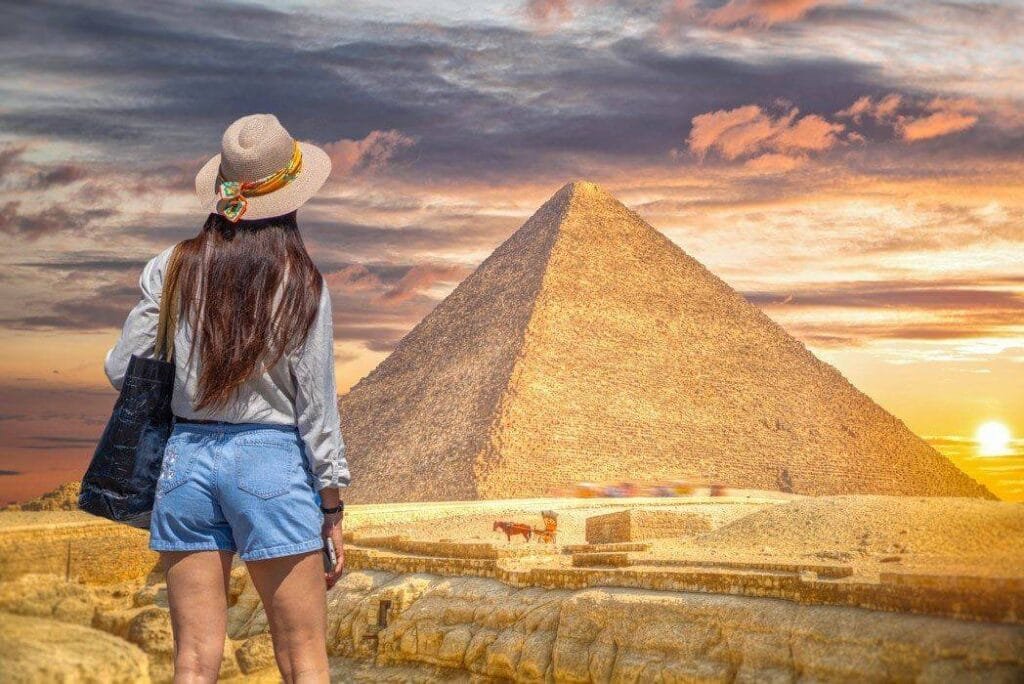
Exploring the Pyramids of Khafre and Menkaure
While the Great Pyramid of Khufu may be the most famous, the Pyramids of Khafre and Menkaure are also significant historical landmarks that deserve attention during your visit. The Pyramid of Khafre, located next to Khufu’s, appears taller due to its elevated position, even though it is slightly shorter. A guided tour of Khafre’s pyramid will highlight its distinct features, including the well-preserved mortuary temple at the base and the large causeway that connects it to the valley temple. These structures, like the pyramid itself, are steeped in ancient Egyptian rituals and beliefs regarding the afterlife. The Pyramid of Menkaure, the smallest of the three, may seem less imposing in size, but its significance is undeniable. It was built for Pharaoh Menkaure and features intricate mortuary temples and a number of statues that demonstrate the craftsmanship of ancient Egyptian artists. During your tour, your guide will explain how the pyramids functioned as part of a complex system of tombs and temples, designed not only to honor the Pharaohs but also to ensure their safe passage to the afterlife. These pyramids are not just impressive structures but spiritual symbols, representing the Pharaohs' divine status and eternal journey.
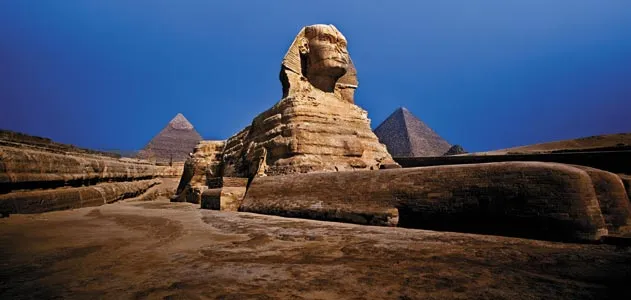
The Enigmatic Great Sphinx
The Great Sphinx of Giza is one of the most famous and enigmatic statues in the world. With the body of a lion and the head of a Pharaoh, this colossal statue stands guard near the Pyramid of Khafre. While its purpose is not definitively known, it is often associated with Pharaoh Khafre, who likely commissioned its creation as a symbol of his power and divinity. During a guided tour, you’ll hear various theories about the Sphinx’s origins, including debates about whether it was built in the Fourth Dynasty or if it may be even older, potentially pre-dating the pyramids themselves. The Sphinx’s weathered face and body have been subject to erosion, but it still stands as a monumental and awe-inspiring figure. Your guide will explain the significance of the Sphinx in ancient Egyptian religion, particularly its connection to the sun god Ra, as well as its role as a protector of the tombs in the Giza Plateau. The mysteries surrounding the Sphinx, including the riddle of its missing nose and the erosion marks on its body, continue to intrigue archaeologists and visitors alike, making it an essential part of any guided tour of the pyramids.
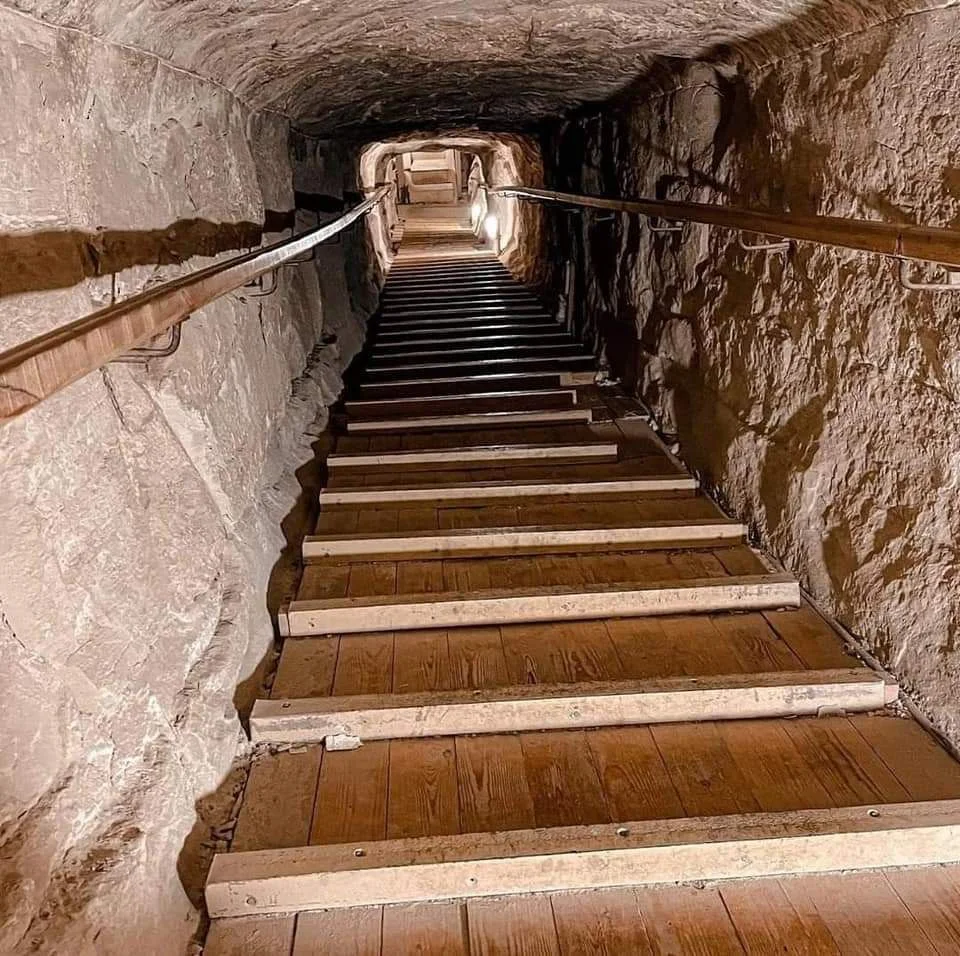
Inside the Pyramids: A Glimpse Into the Past
For many visitors, entering the Pyramids of Giza is the highlight of the tour. Though the interior chambers are relatively simple, they offer a rare and powerful glimpse into ancient Egyptian burial practices. Inside the Great Pyramid of Khufu, you’ll find the king’s burial chamber, which houses a granite sarcophagus where the Pharaoh’s body was placed along with treasures intended to accompany him into the afterlife. During a guided tour, your guide will explain the significance of these burial rituals, which were meant to ensure that the Pharaoh’s soul would be able to ascend to the afterlife and live forever among the gods. As you move through the narrow passageways and chambers, the feeling of being inside such an ancient structure is truly surreal. The air is thick with history, and the sheer scale of the pyramid’s construction becomes all the more impressive. Visiting the interior of the pyramids offers a unique perspective that you can’t experience by just viewing them from the outside. A knowledgeable guide will help you understand the spiritual and architectural significance of these tombs, making your visit feel like an immersive journey through ancient Egypt’s past.
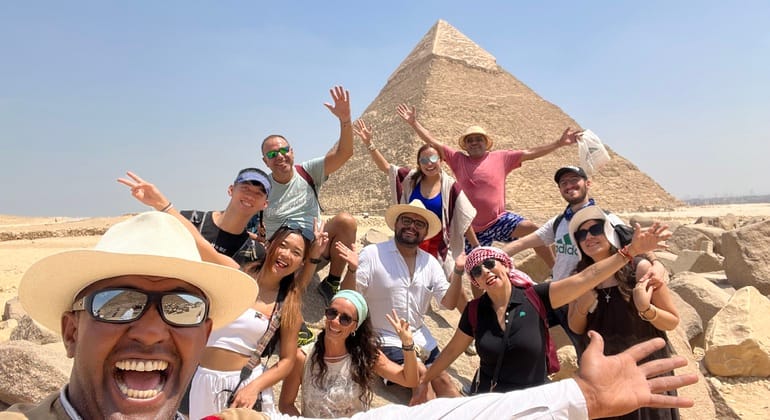
Why Choose a Guided Tour?
While it’s possible to visit the Pyramids of Giza on your own, choosing a guided tour makes all the difference in understanding the rich history and complex construction of these iconic structures. Egyptologists and experienced guides offer expert knowledge, providing you with deep insights into the religious, cultural, and architectural significance of the pyramids. They will take you beyond the surface level, sharing stories and facts that are often overlooked by casual visitors. Guided tours also provide valuable context about ancient Egyptian civilization, including the beliefs, customs, and innovations that shaped the building of these tombs. You’ll learn about the role of the Pharaohs in society, the religious symbolism embedded in the pyramids, and the astounding engineering techniques used to construct these monumental structures. With a guide by your side, you can be sure that you’re not only visiting these incredible sites but also learning about the people who built them, their spiritual practices, and the way they shaped Egypt’s history. The depth of knowledge offered by a professional guide will transform your experience and give you a newfound appreciation for one of the greatest wonders of the ancient world.


